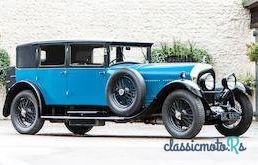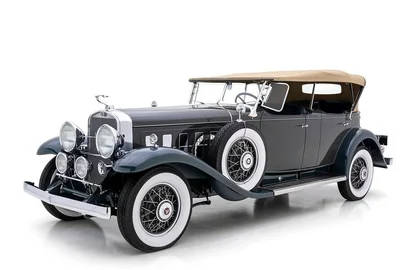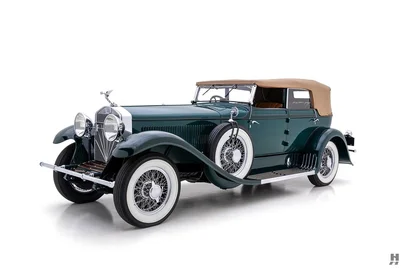
1928' Bentley 6 1/2 Litre
Пожаловаться!Оценить!Запомнить это
£800,000Опубликовано 28 июня 2019ID: QAPeAJ
Истекло
6 лет, 6 месяцев назад
6 лет, 6 месяцев назад
Information from the owner
Кузов: Спорткар
Возраст: 91 год
Цвет: Зеленый
Комментарии продавца про 1928' Bentley 6 1/2 Litre
Bonhams are delighted to offer at our forthcoming Collectors' Motor Car Auction on Friday 5th July 2019 at The Goodwood Festival of Speed, Chichester, England 87 collectors motor cars. The full online catalogue can be viewed on the Bonhams website.
1928 BENTLEY 6½-LITRE STANDARD SIX SALOON
COACHWORK BY GURNEY NUTTING
REGISTRATION NO. UE 6835
CHASSIS NO. FA2504
*One of only six Standard Six saloons known to survive
*Outstandingly original
*Present ownership since 1966
*Restored in the 1960s
£800,000 - 1,200,000
€900,000 - 1,400,000
With characteristic humility 'W O' was constantly amazed by the enthusiasm of later generations for the products of Bentley Motors Limited, and it is testimony to the soundness of his engineering design skills that so many of his products have survived. From the humblest of beginnings in a mews garage off Baker Street, London in 1919 the Bentley rapidly achieved fame as an exciting fast touring car, well able to compete with the best of European and American sports cars in the tough world of motor sport in the 1920s. Bentley's domination at Le Mans in 1924, 1927, 1928, 1929 and 1930 is legendary, and one can only admire the Herculean efforts of such giants as Woolf Barnato, Jack Dunfee, Tim Birkin and Sammy Davis, consistently wrestling the British Racing Green sports cars to victory.
W O Bentley proudly unveiled the new 3-litre car bearing his name on Stand 126 at the 1919 Olympia Motor Exhibition, the prototype engine having fired up for the first time just a few weeks earlier. Bentley's four-cylinder 'fixed head' engine incorporated a single overhead camshaft, four-valves per cylinder, and a bore/stroke of 80x149mm. Twin ML magnetos provided the ignition and power was transmitted via a four-speed gearbox with right-hand change. The pressed-steel chassis started off with a wheelbase of 9' 9½", then adopted dimensions of 10' 10" ('Standard Long') in 1923, the shorter frame being reserved for the TT Replica and subsequent Speed Model. Rear wheel brakes only were employed up to 1924 when four-wheel Perrot-type brakes were introduced.
In only mildly developed form, this was the model that was to become a legend in motor racing history and which, with its leather-strapped bonnet, classical radiator design and British Racing Green livery, has become the archetypal Vintage sports car.
Early success in the 1922 Isle of Man Tourist Trophy, when Bentleys finished second, fourth, and fifth to take the Team Prize, led to the introduction of the TT Replica (later known as the Speed Model) on the existing 9' 9½" wheelbase, short standard chassis.
However, by the middle of the decade the 3-Litre's competitiveness was on the wane and this, together with the fact that too many customers had been tempted to fit unsuitably heavy coachwork to the excellent 3-Litre chassis, led to the introduction in 1926 of a larger car: the 6½-Litre. Known as the 'Silent Six', the latter perpetuated the 3-Litre's mechanical theme but with greatly increased refinement.
Although the 6½-Litre had been conceived as a touring car to compete with Rolls-Royce's New Phantom, in Speed Six form it proved admirably suited to competition: in 1929 Barnato/Birkin's Speed Six won the Le Mans 24 Hour Race ahead of a trio of 4½-Litre Bentleys, while Barnato/Kidston repeated the feat in the following year's Grand Prix d'Endurance at the Sarthe circuit ahead of similarly-mounted Clement/Watney. Small wonder then, that the fast yet refined 6½-Litre Speed Six was W O Bentley's favourite car. The 6½-Litre was produced for four years, during which time 544 chassis were completed, the Standard/Speed Six split being 362/182.
This particular 6½-Litre, registration number 'UE 6835'', is one of 242 erected on the long ST3 (12' 6") chassis intended for formal coachwork and favoured by the majority of customers. This particular chassis was laid down in 1927 and bought by the Bird family of Bird's Custard fame, who sent it to Gurney Nutting for bodying. Gurney Nutting bodied 101 6½-Litre chassis, of which seven survive: 'FA2504', the car offered here; a second Standard Six Weymann saloon on chassis 'FA2507'; and five Speed Sixes, one of them a
four-door Weymann saloon.
Standard Six saloons are now extremely rare; indeed, there are only six known survivors: two by HJ Mulliner, two by Gurney Nutting, one by Barker, and one by Freestone & Webb. As Bentley authority Dr Clare Hay remarks in her customarily thorough report (copy on file), far more Standard Sixes were fitted with such coachwork new than with open sports bodies. The style is fairly formal, a four-door four-light with a bench front seat and a dropping division, with occasional seats to the division to seat up to seven. The finish was originally fabric throughout, with the bonnet fabric covered. 'UE 6835' is a remarkable survivor, and in 2005 was featured in Nick Walker's book, Coachwork on Vintage Bentleys.
The Bentley remained in the Bird family's ownership until just after WW2 when it was sold to the Reverend Noakes, a Master of Foxhounds in the West Country.
After the last entry in the Service Record in February 1939 there is a gap in the records until 1963, when 'UE 6835' was owned by LW Peachey. The next owner listed in the logbook is Christopher Patrick O'Driscoll Lumley in May 1964, followed by the present owner from March 1966. The first available photograph of 'UE 6835' was taken at the BDC Kensington Gardens concours in June 1966. It is unclear how much work has been carried out over the years, though the body had been panelled up to the waistline before 1966. This is not unknown as a repair method to cover damaged fabric.
By this time, large formal saloons and limousines had plummeted in popularity, and many had been laid up during the war and fallen into disrepair. Indeed, in Glass's Guide, crossed hammers were shown against the 6½-Litre and 8-Litre limousines meaning they were considered suitable only for demolition! What demand there was came from enthusiasts wanting to build Speed Six look-alikes.
By some quirk of fate, 'UE 6835' managed to avoid destruction, so when the current owner acquired the Bentley in March 1966 he set about having it carefully restored to original specification, the only 'modern' update being discretely fitted flashing indicators. Indeed, so original is this extraordinary car that it even retains the correct Smiths 5-jet carburettor, Auto Vac, and Barker headlight dipping mechanism; if not unique after some 53 years with but one owner it is certainly very unusual. Other noteworthy features include fitted cocktail cabinets, a Brexton trunk, and a (working) speedometer and clock in the internal division, enabling the rear passengers to see the car's speed.
During this period the car travelled to the owner's home in the South of France; participated in Brooklands driving tests; BDC Silverstone race meetings; and took many brides to church, family weddings etc.
In 1960s, 'UE 6835' had the misfortune of being involved in a slight accident, the offside front chassis member and wing being damaged. P&A Wood were commissioned to repair the car. There was no damage to the radiator or even the numberplate, but it was felt wise to repair the chassis member correctly, necessitating removal of the body together with all major components. While this was undertaken, a full rewire was carried out together with any other work deemed necessary. Interestingly, the condition of the car was such that the insurers required no contribution for improvements.
Always serviced and maintained by renowned Bentley specialist Tony Fabien, 'UE 6835' is featured on the front cover and extensively within the aforementioned Coachwork on Vintage Bentleys. Highly unusual in retaining its original body, this outstanding 6½-Litre is the perfect way to celebrate Bentley's 100th Anniversary in 2019 and is certain to be a talking point among the hoards of Vanden Plas-style Speed Six and Team Car replicas.
1928 BENTLEY 6½-LITRE STANDARD SIX SALOON
COACHWORK BY GURNEY NUTTING
REGISTRATION NO. UE 6835
CHASSIS NO. FA2504
*One of only six Standard Six saloons known to survive
*Outstandingly original
*Present ownership since 1966
*Restored in the 1960s
£800,000 - 1,200,000
€900,000 - 1,400,000
With characteristic humility 'W O' was constantly amazed by the enthusiasm of later generations for the products of Bentley Motors Limited, and it is testimony to the soundness of his engineering design skills that so many of his products have survived. From the humblest of beginnings in a mews garage off Baker Street, London in 1919 the Bentley rapidly achieved fame as an exciting fast touring car, well able to compete with the best of European and American sports cars in the tough world of motor sport in the 1920s. Bentley's domination at Le Mans in 1924, 1927, 1928, 1929 and 1930 is legendary, and one can only admire the Herculean efforts of such giants as Woolf Barnato, Jack Dunfee, Tim Birkin and Sammy Davis, consistently wrestling the British Racing Green sports cars to victory.
W O Bentley proudly unveiled the new 3-litre car bearing his name on Stand 126 at the 1919 Olympia Motor Exhibition, the prototype engine having fired up for the first time just a few weeks earlier. Bentley's four-cylinder 'fixed head' engine incorporated a single overhead camshaft, four-valves per cylinder, and a bore/stroke of 80x149mm. Twin ML magnetos provided the ignition and power was transmitted via a four-speed gearbox with right-hand change. The pressed-steel chassis started off with a wheelbase of 9' 9½", then adopted dimensions of 10' 10" ('Standard Long') in 1923, the shorter frame being reserved for the TT Replica and subsequent Speed Model. Rear wheel brakes only were employed up to 1924 when four-wheel Perrot-type brakes were introduced.
In only mildly developed form, this was the model that was to become a legend in motor racing history and which, with its leather-strapped bonnet, classical radiator design and British Racing Green livery, has become the archetypal Vintage sports car.
Early success in the 1922 Isle of Man Tourist Trophy, when Bentleys finished second, fourth, and fifth to take the Team Prize, led to the introduction of the TT Replica (later known as the Speed Model) on the existing 9' 9½" wheelbase, short standard chassis.
However, by the middle of the decade the 3-Litre's competitiveness was on the wane and this, together with the fact that too many customers had been tempted to fit unsuitably heavy coachwork to the excellent 3-Litre chassis, led to the introduction in 1926 of a larger car: the 6½-Litre. Known as the 'Silent Six', the latter perpetuated the 3-Litre's mechanical theme but with greatly increased refinement.
Although the 6½-Litre had been conceived as a touring car to compete with Rolls-Royce's New Phantom, in Speed Six form it proved admirably suited to competition: in 1929 Barnato/Birkin's Speed Six won the Le Mans 24 Hour Race ahead of a trio of 4½-Litre Bentleys, while Barnato/Kidston repeated the feat in the following year's Grand Prix d'Endurance at the Sarthe circuit ahead of similarly-mounted Clement/Watney. Small wonder then, that the fast yet refined 6½-Litre Speed Six was W O Bentley's favourite car. The 6½-Litre was produced for four years, during which time 544 chassis were completed, the Standard/Speed Six split being 362/182.
This particular 6½-Litre, registration number 'UE 6835'', is one of 242 erected on the long ST3 (12' 6") chassis intended for formal coachwork and favoured by the majority of customers. This particular chassis was laid down in 1927 and bought by the Bird family of Bird's Custard fame, who sent it to Gurney Nutting for bodying. Gurney Nutting bodied 101 6½-Litre chassis, of which seven survive: 'FA2504', the car offered here; a second Standard Six Weymann saloon on chassis 'FA2507'; and five Speed Sixes, one of them a
four-door Weymann saloon.
Standard Six saloons are now extremely rare; indeed, there are only six known survivors: two by HJ Mulliner, two by Gurney Nutting, one by Barker, and one by Freestone & Webb. As Bentley authority Dr Clare Hay remarks in her customarily thorough report (copy on file), far more Standard Sixes were fitted with such coachwork new than with open sports bodies. The style is fairly formal, a four-door four-light with a bench front seat and a dropping division, with occasional seats to the division to seat up to seven. The finish was originally fabric throughout, with the bonnet fabric covered. 'UE 6835' is a remarkable survivor, and in 2005 was featured in Nick Walker's book, Coachwork on Vintage Bentleys.
The Bentley remained in the Bird family's ownership until just after WW2 when it was sold to the Reverend Noakes, a Master of Foxhounds in the West Country.
After the last entry in the Service Record in February 1939 there is a gap in the records until 1963, when 'UE 6835' was owned by LW Peachey. The next owner listed in the logbook is Christopher Patrick O'Driscoll Lumley in May 1964, followed by the present owner from March 1966. The first available photograph of 'UE 6835' was taken at the BDC Kensington Gardens concours in June 1966. It is unclear how much work has been carried out over the years, though the body had been panelled up to the waistline before 1966. This is not unknown as a repair method to cover damaged fabric.
By this time, large formal saloons and limousines had plummeted in popularity, and many had been laid up during the war and fallen into disrepair. Indeed, in Glass's Guide, crossed hammers were shown against the 6½-Litre and 8-Litre limousines meaning they were considered suitable only for demolition! What demand there was came from enthusiasts wanting to build Speed Six look-alikes.
By some quirk of fate, 'UE 6835' managed to avoid destruction, so when the current owner acquired the Bentley in March 1966 he set about having it carefully restored to original specification, the only 'modern' update being discretely fitted flashing indicators. Indeed, so original is this extraordinary car that it even retains the correct Smiths 5-jet carburettor, Auto Vac, and Barker headlight dipping mechanism; if not unique after some 53 years with but one owner it is certainly very unusual. Other noteworthy features include fitted cocktail cabinets, a Brexton trunk, and a (working) speedometer and clock in the internal division, enabling the rear passengers to see the car's speed.
During this period the car travelled to the owner's home in the South of France; participated in Brooklands driving tests; BDC Silverstone race meetings; and took many brides to church, family weddings etc.
In 1960s, 'UE 6835' had the misfortune of being involved in a slight accident, the offside front chassis member and wing being damaged. P&A Wood were commissioned to repair the car. There was no damage to the radiator or even the numberplate, but it was felt wise to repair the chassis member correctly, necessitating removal of the body together with all major components. While this was undertaken, a full rewire was carried out together with any other work deemed necessary. Interestingly, the condition of the car was such that the insurers required no contribution for improvements.
Always serviced and maintained by renowned Bentley specialist Tony Fabien, 'UE 6835' is featured on the front cover and extensively within the aforementioned Coachwork on Vintage Bentleys. Highly unusual in retaining its original body, this outstanding 6½-Litre is the perfect way to celebrate Bentley's 100th Anniversary in 2019 and is certain to be a talking point among the hoards of Vanden Plas-style Speed Six and Team Car replicas.


